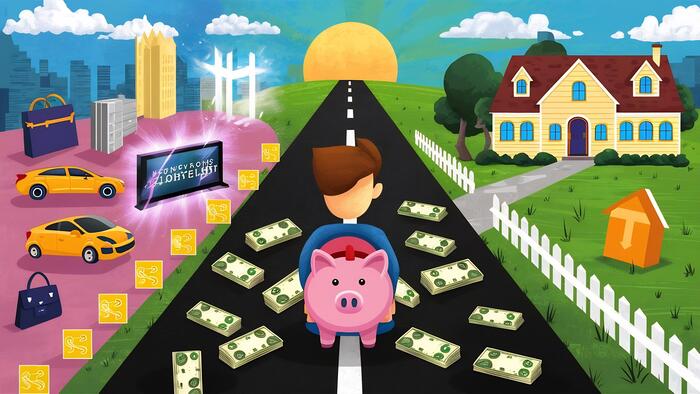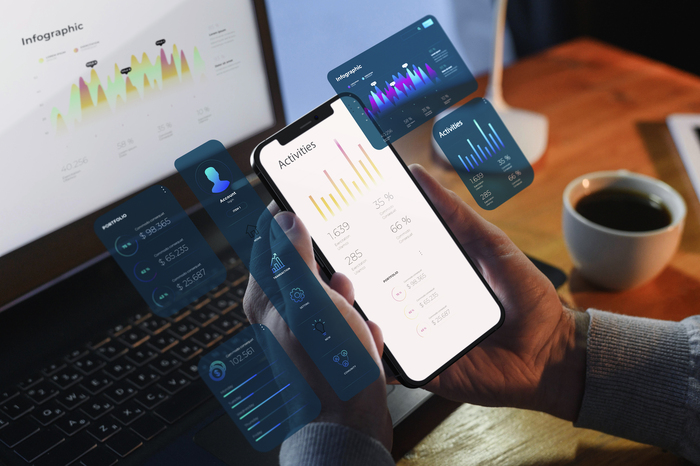Anúncios
The “Game” of Finances

Gamified financial education platforms are revolutionizing the way we learn to deal with money, turning a subject once considered complex and even boring into a dynamic, fun, and effective experience.
If in the past, talking about finances meant facing endless spreadsheets and complicated technical terms, today it is possible to learn while playing, unlocking stages, accumulating points, and earning rewards.
The problem is that many people enter this game without a manual, make mistakes, and end up stuck in cycles of debt. That’s exactly where gamification comes in as the secret shortcut to overcome financial challenges.
In the next sections, you will discover how gamified financial education works, why it is so effective, which are the main platforms available, and how to choose the ideal one for your journey. Keep reading and get ready to level up your financial life.
What is Gamified Financial Education?
Gamified financial education is the process of teaching personal finance concepts using gamification resources — that is, common game elements applied in other contexts.
Instead of just reading long texts or attending theoretical classes, the user is invited to take part in an interactive journey. Each completed task becomes a mission, each goal achieved yields rewards, and each progress is measured in points, rankings, or virtual badges.
Examples of common mechanics in gamified platforms:
- Points: you earn points by recording expenses, saving money, or completing activities.
- Challenges: like special stages that test your skills, such as saving a specific amount in 30 days.
- Rewards: these can be virtual (badges, avatars) or real (discounts, cashback, prizes).
- Ranking: encourages healthy competition with other users.
In practice, it’s like turning the act of saving into “leveling up” and the habit of investing into unlocking a superpower.
Why Does Gamification Work So Well?
Gamification is not just a passing trend. It works because it connects with the way our brain understands progress and reward.
Constant Motivation
When we earn points or unlock badges, our brain releases dopamine — the neurotransmitter of pleasure and motivation. This sensation creates a positive cycle: the more rewards we get, the more we want to keep going.
Active Learning
While traditional teaching methods tend to be passive (reading, listening, watching), gamification turns the learner into the protagonist. The user learns by applying content in practice, making financial decisions, and seeing the consequences.
Long-term Engagement
Studies show that the use of gamification techniques increases engagement in learning platforms by up to 60%. This means people stay involved longer and actually put concepts into practice.
In short, gamification works because learning becomes as enjoyable as playing.
Advantages of Learning Finances Through Play
Gamification offers benefits that go far beyond fun. Here are some of the “power-ups” it brings:
- Continuous Engagement
Many people drop out of traditional finance courses due to lack of motivation. But when learning turns into a game, students feel pleasure in coming back every day to “pass the next stage.” - Creation of Healthy Financial Habits
Recording expenses daily may seem tiring, but when it earns points or unlocks achievements, the habit becomes natural. - Immediate Practical Application
Instead of memorizing theories, the user practices in everyday life — testing savings strategies, expense tracking, and investment simulations. - Inclusion and Accessibility
Children, teenagers, young adults, and even seniors can learn in a light and pressure-free way. - Healthy Competition
Rankings and challenges among friends or coworkers encourage discipline and consistency.
In other words, gamification gives users what many traditional courses cannot: consistency.
Examples of Gamified Platforms
There are several initiatives in the market that already explore gamified financial education. Among the most common models, we have:
- Apps for beginners: focused on basic expense tracking and savings goals, using simple rewards to encourage ongoing use.
- Tools for beginner investors: simulators that allow you to “play” with fictitious investments before applying real money.
- Corporate environments: companies adopt gamified platforms to teach employees how to organize their personal finances, which impacts productivity and reduces financial stress.
This diversity shows that gamification can adapt to different audiences and goals, becoming a powerful strategy to popularize financial education.
How to Choose Your Platform – Beginner’s Guide
With so many options available, how do you know which platform is right for you?
- Define your goals: Do you want to learn to save, invest, or just better understand your budget? Each platform meets a specific need.
- Evaluate usability: A complicated app can demotivate use. Choose intuitive interfaces with a friendly design.
- Check reliability: Choose platforms from recognized companies or those with good user reviews.
- Consider engagement: Some apps only provide reports, while others truly create a game-like experience. Ask yourself: “Does this platform motivate me to continue?”
- Think about cost-benefit: There are excellent free options, but some paid versions offer exclusive content, advanced reports, and personalization.
Just like in any game, choosing the right tool is essential to reaching the next level.
The Future of Gamified Financial Education
We are only at the beginning of the journey of gamification in financial education. The next stages promise even more innovation:
- Augmented and Virtual Reality: imagine putting on VR glasses and simulating a marketplace, making purchase and budgeting decisions in real time.
- Artificial Intelligence: platforms that analyze user behavior and suggest personalized missions, such as “reduce delivery expenses this week.”
- Integration with educational institutions: schools may adopt financial games from early childhood, creating more financially conscious generations.
- Gamified corporate training: companies that encourage employees to learn about personal finances tend to reduce stress and increase engagement at work.
These trends show that, in the future, learning about money can be as fun as spending hours on a popular game.
Conclusion: Your Next Mission
In the end, gamified financial education platforms are much more than a trend: they represent a new way of looking at money, turning learning into an engaging, accessible, and practical experience.
By gamifying the process, anyone can leave behind the feeling that finances are complicated and start building solid money habits in a light and enjoyable way.
But this is just the first stage of your journey toward financial independence. After understanding how learning through play can be effective, the next step is to learn how finance management apps can help in your daily life — automating controls, organizing expenses, and enabling you to make clearer decisions.
In our next article, we’ll explore how to manage your personal finances with apps, showcasing the best features, benefits, and tips to use technology to your advantage. Don’t miss this continuation of your journey toward a more strategic and balanced financial life!
Recommended Content
